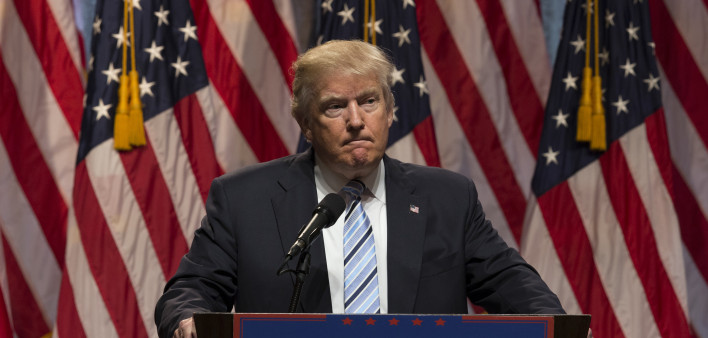In his State of the Union address Tuesday night, Trump is expected to pledge to end the HIV epidemic in the United States by 2030, reports Politico.com. The news site spoke with four people with inside knowledge about the president’s planned remarks, though the final details of the speech remain unclear.
What we do know about the HIV strategy, according to Politico, is that for the first five years the plan will focus on the communities hardest hit by the epidemic across about 20 states. The goal is to see no new HIV transmissions by 2030.
The plan has the support of the nation’s top health officials: Robert Redfield, the head of the Centers of Disease Control and Prevention (CDC), and Alex Azar, the secretary of the Department of Health and Human Services (HHS). In fact, Redfield helped craft the plan, Politico reports.
On the surface, a plan to eliminate new HIV transmissions and the number of people who develop AIDS does not sound much different from the “Getting to Zero” strategies already adopted by a number of cities and states, including Chicago, Connecticut, San Francisco and San Diego. The Trump plan might also be similar to the “90-90-90” targets set by the Joint United Nations Pogramme on HIV/AIDS (UNAIDS) and also adopted by countries and cities across the globe. Those targets include: diagnosing 90 percent of people with HIV so they know their status; getting 90 percent of those people on HIV meds; and getting 90 percent of that group to achieve viral suppression. (People living with HIV who take daily treatment and maintain an undetectable viral load not only live a healthier life but also cannot transmit the virus, a fact known as U=U or Undetectable = Untransmittable.)
While most U.S. presidents use the State of the Union address to announce their aspirational goals for the country—many of which don’t come to fruition—the HIV community has reason to question Trump’s commitment to ending the epidemic. After all, his administration has made dismantling the Affordable Care Act (ACA, or Obamacare) a top priority. As AIDS United wrote in a POZ blog in December, a complete repeal of the ACA would result in a staggering 17.1 million people losing health insurance.
In related news, last month AIDS United also wrote about another attack on health care, this time on drugs available through Medicare. For details, read “Trump Administration Proposal Would Remove Protections for HIV Meds.”
And at the end of 2017, Trump fired all members of the Presidential Advisory Council on HIV/AIDS (PACHA), leaving the council empty—until two cochairs were named in December 2018. What’s more, Trump has failed to appoint a director of the Office of National AIDS Policy (ONAP), which means that the United States has been without an AIDS czar for the past two years.
After news broke that Trump is expected to talk about HIV during his State of the Union address, the Human Rights Campaign (HRC), which advocates for LGBT civil rights, released a statement. “If this administration wants to combat the spread of HIV, they need to immediately end their efforts to cut Medicaid funding, undermine the Affordable Care Act and license discrimination against the most at-risk communities when they seek health care,” said David Stacy, HRC director of government affairs. “This administration simply cannot achieve this goal while, at the same time, charging forward with attacks on health care for the communities most impacted by HIV. The American public deserves a real commitment from their government to end the HIV epidemic.”
HRC makes the case that Trump and Vice President Mike Pence have a “disturbing record on HIV and AIDS.” Just one example from the HRC statement: In 2017, the Trump-Pence White House wanted to cut $1.1 billion from U.S. funding to fight global HIV.
To learn more in POZ about the HHS head, read “Ex-Pharma Executive Alex Azar Is Confirmed as Health Secretary.” And for background on the CDC’s Redfield, check out the POZ news item “Amid Criticism, HIV Researcher Robert Redfield is Named Director of CDC.”
Update: To read more details about the plan, see “What Do We Know About Trump’s HIV Plan for America?”







5 Comments
5 Comments